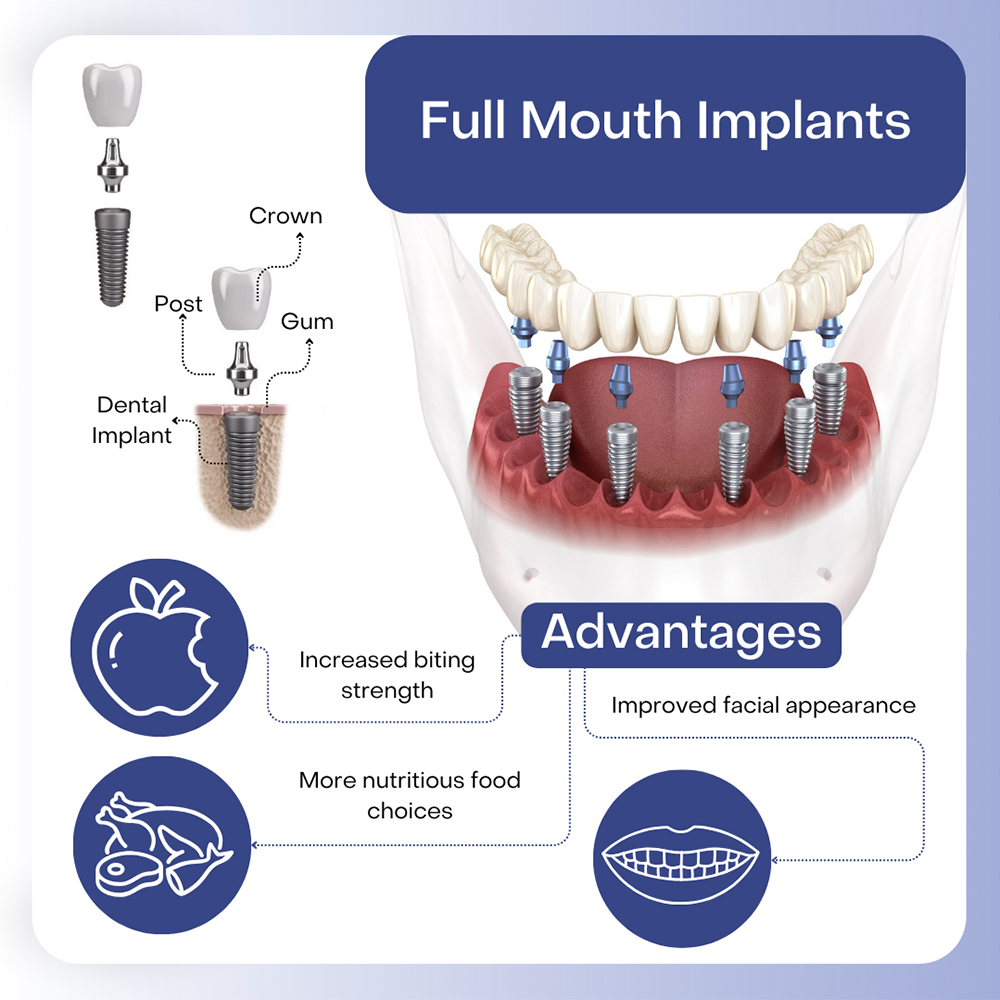The Buzz on Dental Sense
Dental Sense Fundamentals Explained
Table of ContentsDental Sense - QuestionsNot known Facts About Dental SenseWhat Does Dental Sense Do?Rumored Buzz on Dental Sense
are clinical tools surgically implanted right into the jaw to recover a person's capability to chew or their appearance. They offer support for synthetic (phony) teeth, such as crowns, bridges, or dentures. When a tooth is lost due to injury or disease, an individual can experience problems such as quick bone loss, faulty speech, or modifications to chewing patterns that lead to discomfort.Oral implant systems contain an oral implant body and oral implant joint and might additionally consist of a joint fixation screw. Dental implant vs bridge. The dental implant body is surgically put in the jawbone instead of the tooth's root. The dental implant abutment is generally connected to the dental implant body by the joint fixation screw and extends via gum tissues right into the mouth to sustain the attached synthetic teeth
(https://sitereport.netcraft.com/?url=https://nearme.vip)Structure of The Oral Implant System picking dental implants, speak to your oral service provider concerning the prospective benefits and dangers, and whether you are a prospect for the treatment. Things to consider: Your total health is a crucial aspect in establishing whether you are an excellent prospect for dental implants, just how long it will certainly require to recover, and for how long the implant might stay in area.
Cigarette smoking may impact the healing procedure and lower the lasting success of the dental implant. The recovery procedure for the dental implant body may take several months or longer, throughout which time you generally have a momentary joint instead of the tooth. the dental implant procedure: Carefully follow the oral health directions offered to you by your oral service provider.
Excitement About Dental Sense
Implant failure can lead to the requirement for another surgical treatment to deal with or replace the implant system. Brings back the capacity to chew Recovers cosmetic appearance Helps maintain the jawbone from reducing due to bone loss Maintains the health and wellness of the bordering bone and periodontals Helps keep surrounding (nearby) teeth secure Boosts lifestyle Damages to surrounding all-natural teeth during dental implant placement Injury to the surrounding tissues during surgical treatment, such as sinus perforation Injury throughout surgery (for instance, crack of surrounding jawbone) Poor feature, such as really feeling like the teeth do not bite with each other usually A feeling that the tooth hangs or turning in position resulting from a joint screw loosening up Implant body failing (looseness of the implant body) because of systemic infection, which may be much more likely in individuals with uncontrolled diabetes mellitus due to regional infection in bone and gums supporting the implant body because of postponed healing, which may be more probable in individuals who smoke Trouble cleaning up the gums around the implant, resulting in poor oral health Untreated gum condition Post-surgical pins and needles because of nerve impingement or damages Always alert wellness treatment service providers and imaging technicians that you have oral implants before any type of magnetic vibration imaging (MRI) or x-ray procedures.
FDA is not familiar with any damaging events reported for MRI or x-ray treatments with oral implants. Dental implants systems are generally constructed from products that follow global consensus criteria of the International Company for Standardization (ISO) or ASTM International. These standards have details of what makes a risk-free product.

A dental implant is a framework that changes a missing tooth. With screw-like devices, the surgeon inserts an implant into the jawbone, and it functions as an anchor for a synthetic tooth, called a crown. A tool called an abutment connects the fabricated tooth to the dental implant. The crown is tailor-made to fit the individual's mouth and match the shade of their teeth.
The Facts About Dental Sense Revealed
Some people are not eligible for dental implant surgery. It is for dental surgeons to operate individuals with: acute illnessuncontrollable metabolic diseasebone or soft tissue disease or infectionIf these problems are resolved, a person can have the surgery. In, oral cosmetic surgeons abstain from running on people with: If individuals with any one of the above undergo oral implant surgical treatment, there is a higher danger of the dental implant falling short.

Dental implant surgery is an individualized process. Offer you time to recover. Affix the post and last crown, bridge or denture.
Next, your doctor will meticulously position the dental implant into your jaw. Your surgeon will certainly reposition your periodontals and close the incision with stitches. If your dental implant is near the front of your mouth, your dental practitioner will make a temporary tooth for you to put on until you heal. That means, you won't have a gap in your smile while you recover.
The Definitive Guide to Dental Sense
Throughout the recovery stage, your jawbone ought to fuse to the oral implant. This procedure can take anywhere from three to nine months.
When your dental implant heals, your dental expert can affix the joint (little connector post) and your last restoration (crown, bridge or denture). This generally takes concerning one hour to complete and might call for a 2nd small surgical treatment. You shouldn't feel any type of discomfort during your oral implant procedure because your service provider will utilize medication to numb your periodontals.